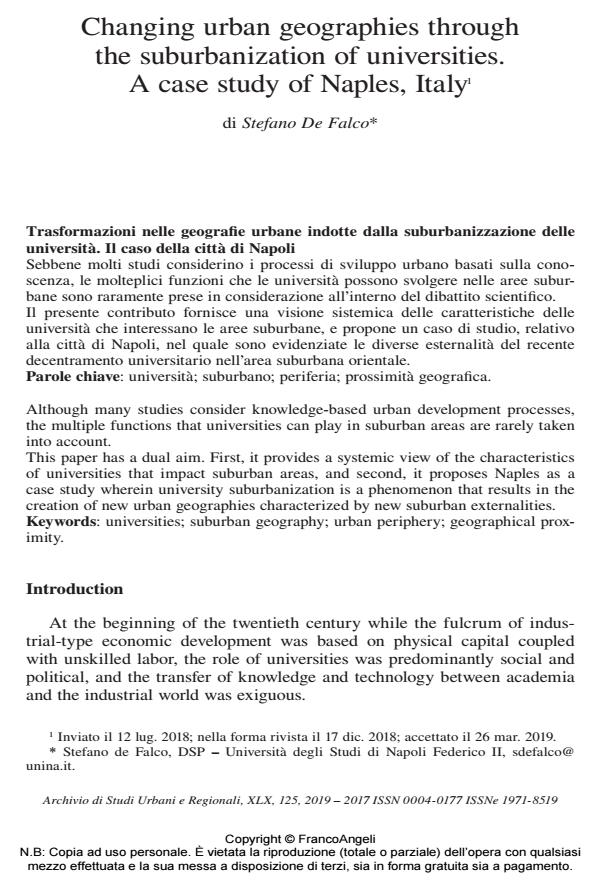Changing urban geographies through the suburbanization of universities. A case study of Naples, Italy
Titolo Rivista ARCHIVIO DI STUDI URBANI E REGIONALI
Autori/Curatori Stefano De Falco
Anno di pubblicazione 2019 Fascicolo 2019/125
Lingua Italiano Numero pagine 27 P. 141-167 Dimensione file 259 KB
DOI 10.3280/ASUR2019-125007
Il DOI è il codice a barre della proprietà intellettuale: per saperne di più
clicca qui
Qui sotto puoi vedere in anteprima la prima pagina di questo articolo.
Se questo articolo ti interessa, lo puoi acquistare (e scaricare in formato pdf) seguendo le facili indicazioni per acquistare il download credit. Acquista Download Credits per scaricare questo Articolo in formato PDF

FrancoAngeli è membro della Publishers International Linking Association, Inc (PILA)associazione indipendente e non profit per facilitare (attraverso i servizi tecnologici implementati da CrossRef.org) l’accesso degli studiosi ai contenuti digitali nelle pubblicazioni professionali e scientifiche
Although many studies consider knowledge-based urban development processes, the multiple functions that universities can play in suburban areas are rarely taken into account. This paper has a dual aim. First, it provides a systemic view of the characteristics of universities that impact suburban areas, and second, it proposes Naples as a case study wherein university suburbanization is a phenomenon that results in the creation of new urban geographies characterized by new suburban externalities.
Parole chiave:Università; suburbano; periferia; prossimità geografica.
Stefano De Falco, Changing urban geographies through the suburbanization of universities. A case study of Naples, Italy in "ARCHIVIO DI STUDI URBANI E REGIONALI" 125/2019, pp 141-167, DOI: 10.3280/ASUR2019-125007